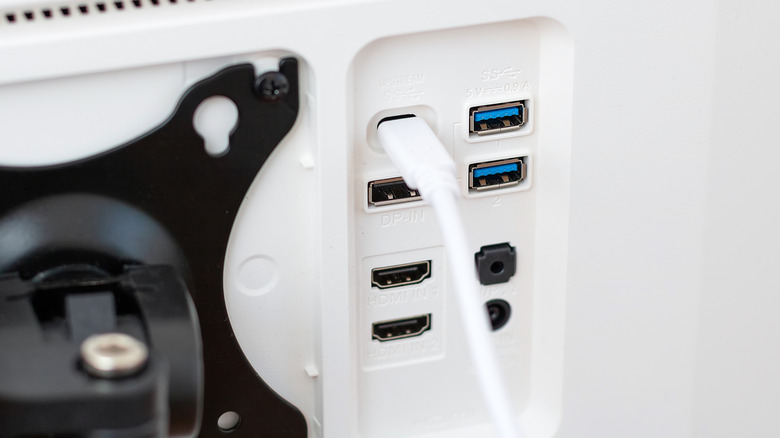What Do Upstream And Downstream USB Ports Mean On A Monitor?
Developed in the 1990s, Universal Serial Bus (USB) technology made it easier to connect computers with peripherals or external devices. It has since become the industry standard and is now used in everything from smartphones and laptops to gaming consoles and even household appliances. Based on how data and power flow, USB ports are categorized into two types: upstream and downstream USB ports. The upstream port is where a device receives data and draws power, while the downstream ports provide data and power to peripherals. Many portable devices have only upstream USB ports.
Flash drives, keyboards, and mice, for example, are end-point devices, so they're designed to be final recipients or sources of data and typically don't have (or need) downstream USB ports. What about monitors? Well, some monitors don't have any USB ports at all. But if your monitor has separately labeled upstream and downstream ports, you'll want to know how they actually work and what sets them apart.
Upstream vs. downstream USB ports on a monitor
Many modern monitors include built-in USB hubs, which expand one USB connection into multiple connections for peripherals. The upstream port on the monitor is linked to your computer. Once that connection is established, the monitor's downstream ports function effectively like an extension of your computer's USB ports. The way this setup works in practice is simple. You connect the monitor with your computer via its upstream port, and any device that you plug into the monitor's downstream USB ports communicates to your computer, as if it were connected directly.
When you have multiple peripherals, a central place to connect them is much more convenient than constantly reaching behind your PC to plug and unplug cables. Generally, the more USB ports a monitor has, the better. While their main use is to connect peripherals like keyboards and mice, you can also use your monitor's USB ports to charge your phone, play media, connect speakers, or even set up a multi-monitor workspace.

